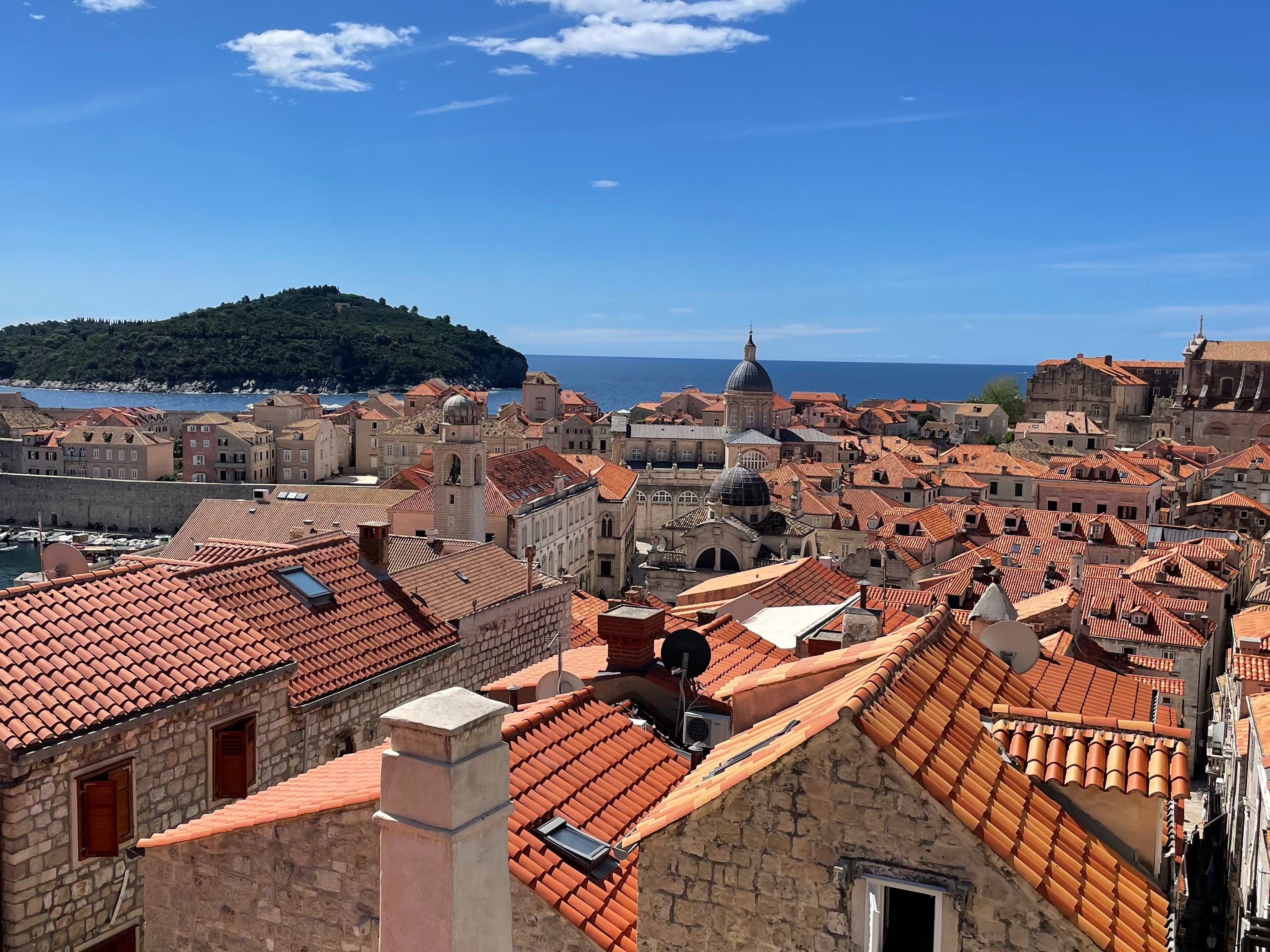
Curator’s statement
I love Croatia for its pristine natural beauty and the kind, vibrant spirit of its people. The country’s authenticity and charm shine through in its boutique, artisan products from small, local, organic producers. Croatia’s rich history is celebrated and preserved, reflected in its strong community focus, stories, art and architecture. This dedication to tradition and quality ensures every experience feels genuinely Croatian. This guide explores the best times to visit coastal Croatia.
The Fora Difference
Book with Katy to access exclusive perks and experiences on your trip.
Killer perks
Free upgrades, spa credits and more—we got you
Personalized recs
Customized travel planning for your style
Insider knowledge
Expert advice from people who’ve actually been there
Where to stay in Croatia
Unlock perks by contacting Katy to book your trip.
The Best Time to Explore the Coastal Cities in Croatia

Croatia is a captivating destination with its stunning coastline, cities layered by millennia of well-preserved history and rich cultural traditions that locals are eager to share with you. Deciding when to visit depends on what you hope to experience—whether it's exploring ancient sites without the crowds, joining locals to harvest grapes and olives, eating the best oysters or enjoying smooth sailing around the islands. Let’s dive into the best times to soak in the charm and turquoise waters of Croatia's coast.
Avoiding Crowds in Croatia for a More Authentic Experience
Tourism in Croatia's coastal cities is booming and can be overwhelming, especially in port towns with large cruise ship terminals. These destinations are crowded for a reason — they are highly preserved, unique and stunning. However, knowing when and how to visit is key to having the best experience.
Avoiding crowds in cities like Split and Dubrovnik often means understanding the schedules of offshore excursions and large buses from day trips, which peak in the summer months. Local guides can be invaluable in navigating these busy areas. According to our guide in Split, the most intense crowds often arrive in June and September as many tourists avoid the hottest months of July and August.
As with much of Europe, travel seasons are shifting as more travelers seek to avoid peak summer crowds, making shoulder seasons (May-June and September-early October) a little more crowded than in the past, but still wonderful times to go. Months like March, October and early November offer a more relaxed and authentic experience with locals. December through February are very light on travelers but can still be festive during their international and local holidays. Remember that many hotels and restaurants are closed in these low seasons, especially on the islands, and many coastal areas shut down entirely in the winter so that locals can take an extended break after the busy seasons.
Whenever you decide to go, if you're in a port city, early morning walks (before 9 am) can help you see them in their quiet beauty. Spend the mornings lazily over coffee as the Croatians do, and avoid the sites during this time. Late afternoon tours (starting around 17:00) help you avoid the offshore excursions and day-trippers, allowing you to enjoy the city with locals and those staying overnight.
Culture, Wine, and Culinary Delights
Croatia's rich cultural heritage and historical sites are best explored when you can share them with locals. Visiting in the shoulder and low seasons allows for a deeper engagement with Croatian culture. Here are a few experiences to consider:
In Sibenik, planning your visit around the concert schedule at Fort St. Michael, usually in late spring or early autumn, allows you to enjoy the historic town and its UNESCO-listed Cathedral of St. James more intimately.
For oyster lovers, the season runs from September to April/May, with March being a prime time when the waters are cool and the oysters are plump. Croatian oysters are best enjoyed directly at the oyster farms, with Mali Ston Bay being a favorite spot. Here, the mix of freshwater and saltwater produces some of the best oysters you’ll ever taste, straight out of the water in one of the most picturesque locations to do so.
Croatia is renowned for its wine regions and culinary traditions, with most wineries being small, organic producers. While the wine is always good, visiting during harvest seasons opens up opportunities to dive deeper into local communities through their traditions. September is the grape harvest season in the Istria region, making it an ideal time for wine tours and festivals. On the Pelješac Peninsula, arguably one of the best wine areas in the country, harvest season can start in September and last through late October.
October is also the typical olive harvest season when you can participate in olive picking and oil production. Many locals grow their own olives and make and bottle their own olive oil at local production facilities. Visiting one such facility on the island of Hvar, followed by a tasting, is an unforgettable experience.
February is surprisingly festive along some parts of the coast, including Rijeka, which hosts the country’s largest carnival with colorful parades and lively celebrations. Dubrovnik celebrates the Feast of Saint Blaise with processions and festivities. The rest of the country remains serene and quiet during winter, perfect for those looking to experience Croatia's cultural traditions in a more intimate setting.
Best Times for Weather and the Outdoors
Croatia’s natural beauty is best appreciated through outdoor activities, which are more enjoyable when the weather is mild. Rain or shine, hot or cold, the landscapes are stunning, but here are some strategic times to go based on different activities:
Spring and early autumn are ideal for hiking and biking along the coast, with comfortable temperatures and lush, vibrant landscapes. March through May are the driest months to do so. National Parks such as Krka and Plitvice Lakes are crowded but can be less so in the shoulder and low seasons. If you aren’t traveling during the low season, visiting these parks in the late afternoon, after the large buses have left, offers a more serene experience. For boating, April through October offers the calmest waters, which has given Croatia its excellent reputation for cruising its pristine waters.
In Hvar, June and July are perfect for experiencing the lavender fields in bloom before the harvest. The island's rolling and rocky lavender fields can be tricky to navigate, so plan on a guide to take you.
Best Times to Travel Sustainably
Traveling at the right times and in the right way is important for enriching your experience and preserving the natural and cultural heritage of highly touristed destinations like Croatia’s coastline. By visiting during the shoulder and off-seasons, you help reduce the strain on local resources and support sustainable tourism practices. Staying in boutiques and locally owned accommodations, prioritizing the community and environment, spending money in independently owned shops and slow food restaurants, and participating in tours led by reputable local guides are excellent ways to support the destination.
For instance, choosing a boutique hotel focused on environmentally progressive practices like Maslina Resort in Hvar or a family-run winery tour on the Pelješac Peninsula like Miloš ensures that your money supports the destination. Engaging in traditional experiences, such as a Peka cooking class or visiting the lace-making nuns in Hvar, deepens your trip experience and helps preserve these beautiful cultural practices.

Travel Advisor
Katy Hoogerwerf

Get in touch with Katy
Did you like this guide? Reach out to customize and book your own experience. Or, just to chat about travel in general.
You can expect a response from Katy within 1–2 business days. You’ll also be subscribed to our traveler newsletter (you can unsubscribe at any time).
This guide is part of our ongoing series on travel to Croatia. In need of further inspiration? Check out Fora Advisor Katie Gooding's Guide, Croatia Cities to Visit: A Journey Through Its Ancient Adriatic Gems.